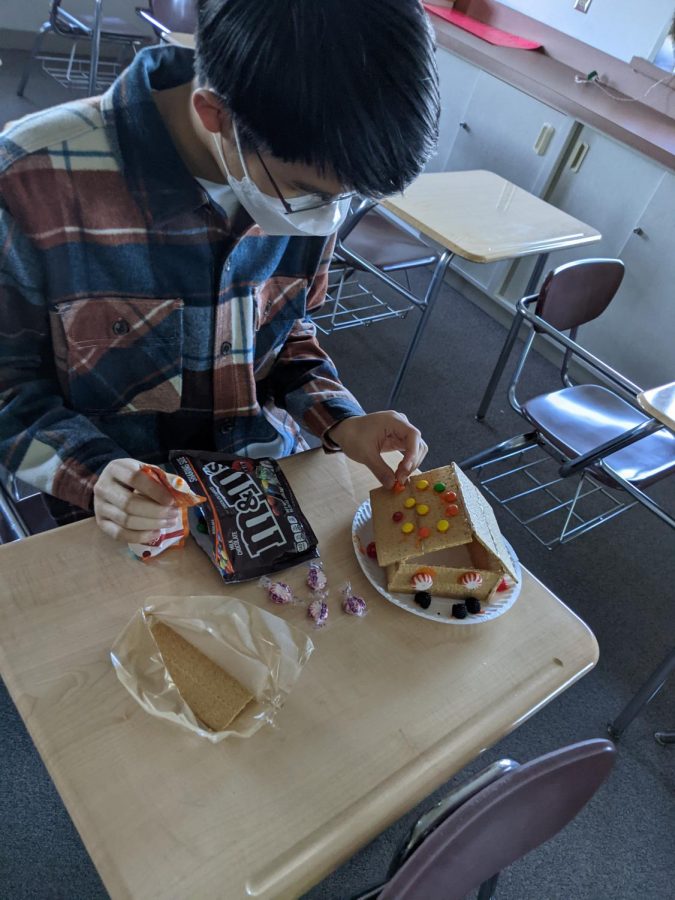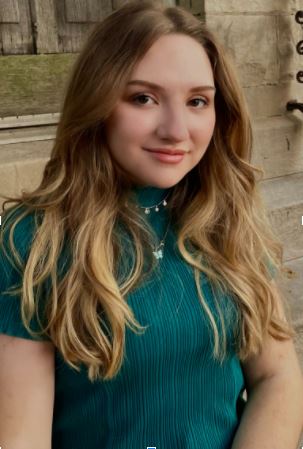German Club celebrates Weihnachten festival
Photo Credit: Jennifer Ibanez Junior James Kim adds candy decorations to the roof of a carefully created lebkuchenhaus (traditional German Gingerbread house) during the German Club meeting on Dec. 6. Photo courtesy of Jennifer Ibanez
December 18, 2021
German Club members embraced the holiday spirit by partaking in weihnachten activities.
The festivities began with the members celebrating St. Martinstag on Nov. 15. This long-lasting European holiday recognizes the story of how St. Martin of Tours became a bishop through his acts of kindness.
Traditionally, Germans celebrate by creating papier laternens and singing ‘lantern songs’ on this holiday. The German club decided to partake in making handmade lanterns after school as a way of recognizing and learning about the importance of this holiday.
“We like to further our understanding of the German language and culture through our German club experiences,” German club sponsor Jennifer Ibanez said. “St. Martin’s most notable act was when he cut his cloak and shared it with a beggar during a snowstorm. This is the time of year where we celebrate things that we are thankful for in the U.S. and more and more we see a need for examples of kindness and generosity. Not only is it fun to sing the songs and make the lanterns, but St. Martin is also a symbol that is relevant to our culture today.”
The decorative lanterns, which resemble symbols from the story of St. Martinstag, required meticulous cutting, taping, and many sheets of construction paper.
“It was more time-demanding than I expected,” German club board member junior George Dimas said. Chocolate-filled traditional Advent calendars also became available for sale the first week of November for $3.00. This is a major fundraising activity for the club, and over 110 calendars were sold.
“This is the only fundraiser that we traditionally have for the German Club,” Ibanez said. “The money that we raise goes towards our club meetings. Generally, it goes towards supplies like the gummi bears or prizes that we used in our Gummibaer Olympics, the candy that we will use to celebrate St. Nick Day this month, or the ice cream and toppings for our Spaghettieis meeting in the spring.”
Tracing back to early 19th century Germany, advent calendars started as merely chalk markings on the ground, counting down towards Christmas. As the tradition evolved, however, there began to be gifts associated with the passing of every day. Now the world has come to know them to contain any variety of small trinket or treat.
“Seeing the Advent calendars reminds me of the holiday season,” senior Jackson Folkers said.
The calendars are more than a fundraiser to German students, however, as they have become tradition in the German classroom. It is not uncommon to see a student snacking on small chocolates during class this time of year.
“I bought one for myself to eat like a box of chocolates without following the advent calendar rules,” junior Hudson Hiatt said.
Club members also showed holiday cheer during their Dec. 6 meeting by building lebkuchenhäuser, a staple holiday activity originating in Germany during the late 1800s.
“Traditionally we go downtown to the German Christkindlmarkt for our December club meeting, but with the pandemic this year, we chose to postpone that,” Ibanez said…”The tradition of Gingerbread houses originated in Germany, and so it seemed only fitting to continue with our cultural traditions by making Gingerbread houses this year.”



